2022 Mazda3 Hatchback: Boring Gay Car Review
This Mazda feels dangerously close to luxury, but is it enough to keep up with newer offerings?
I don’t know when it happened, but I have become a Mazda stan. In recent years, I have steered several of my friends into buying Mazdas. I think the current era of Mazda’s design language is stunning. Mazda has made it a point to up their game, moving on from quirky designs and the “zoom zoom” era to sophisticated cars that give luxury competitors something to worry about. After recently reviewing the Honda Civic Hatchback in the Sport trim, I was pretty impressed, but at the same exact price point is this Mazda3 hatchback with Select trim…and it left me even more impressed. Let’s get into why…
Only in its fourth generation, the Mazda3 has quickly become a cult classic among gearheads (particularly in hatchback form). I’d imagine it is frequently cross-shopped against the Subaru Impreza and the latest generations of the Honda Civic and Toyota Corolla in hatchback form. The fourth-generation Mazda3 made a huge leap in design and quality, closely resembling what you can expect to feel in an entry-level Audi, BMW, or Lexus. I remember when I first saw this generation of hatchback on the road and my jaw kind of dropped. The dramatic shape and enlarged C-pillar on the car were very striking. The design is purposefully made to have simple clean lines, but also a fluidity that captures light and creates drama. One of the great things (at least in my part of the world) is that I don’t see a ton of these hatchbacks on the road. They definitely seem to be less common than the Honda Civic and Toyota Corolla hatchbacks, which is probably also a function of buyers shifting more to crossovers in recent years. But, as most car enthusiasts will attest, a wagon or hatchback is usually a better way to get space without sacrificing a fun driving experience. In the case of the Mazda3, it is essentially the same car as the Mazda CX-30, which probably sells in higher numbers by virtue of being a baby SUV. Both cars are beautiful options…but you probably want to opt for the hatchback if you want something a bit more “rare.”
Who Would Drive It?
So who might buy a Mazda3 hatchback? The car is going to appeal to people who need space, still want a luxury feel, and who are on a budget. So probably the person who likes getting away on weekends, still has a corporate job, and has a long runway before paying off those student loans. With roofracks, I can see this car hauling quite a bit. That said, the backseat is pretty darn tight so I wouldn’t say it’s the best option for four adults to travel places (you might want the CX-30 for that). The design of this car is going to appeal to those who find the Corolla hatchback too quirky looking and the Honda Civic hatchback too common. All of that combined with the price point on this car makes it a great option for a wide range of drivers.
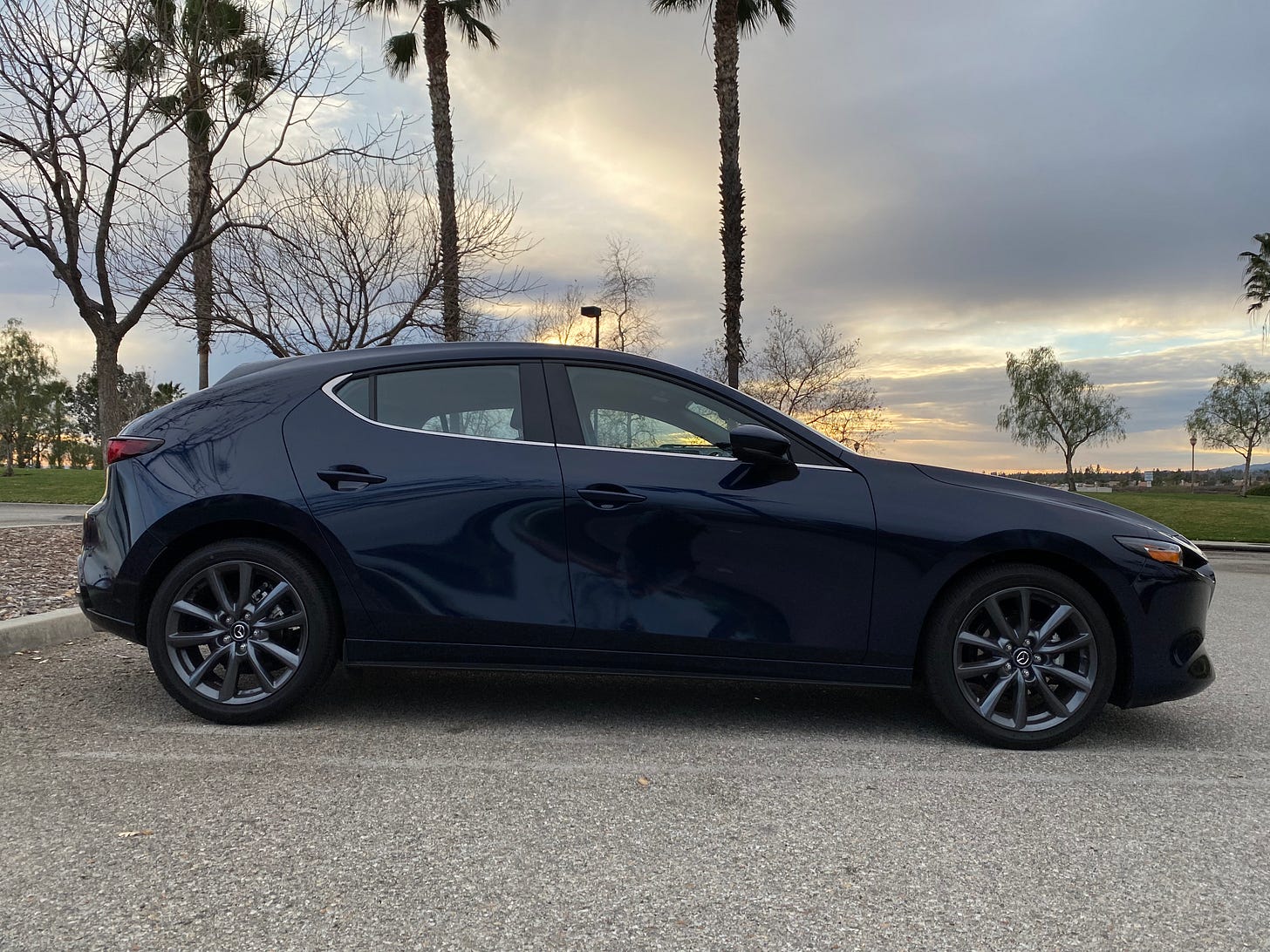
Stats
Let’s get into some numbers. The Mazda3 sedan and hatchback were redesigned in 2019. While they have been on the road for a few years, the styling feels fresh and the car stacks up with even the most recent competition. The sedan starts at $21K and the hatchback at $23K. If you’re interested in leasing the hatchback, you can expect to be in the $200-300 monthly payment range if you put down $2,500 on a 3-year lease. For those cross-shopping the CX-30, you are likely to get a slightly better deal on the Mazda3 hatchback given that it’s less popular and dealers seem to have plenty in stock. Although the car has been out for a few years, opting for a used model will only save you a couple thousand at best in this pandemic pricing environment.
Every Mazda3 hatchback has a 4 cylinder, 186 horsepower engine with 186 pound-feet of torque. That’s paired to a six-speed automatic transmission which most prefer to the CVT transmission on competitors such as the Civic. Mazda does make a turbo version, which gets 250 horsepower with 320 pound-feet of torque (numbers that sound very fun), however, those models start in the low $30’s. The base car gets 26 MPG city and 34 MPG highway - not the best among the competition by any means. If you’re wondering, the turbos get 23/31 MPG. On the base car, I’d like to see the highway number closer to 40…but you can’t always get what you want. The engine is more powerful than the competition, but the MPG suffers as a result so it’s a trade-off. AWD is also an option but will cost you a little on MPG.
The Mazda3 hatchback has a 13.2 gallon fuel tank - I include this because with gas prices these days, it’s kind of nice to calculate what filling from empty might cost you at $4+ a gallon. Similar to other cars, the Mazda will tell you you have 0 miles of gas left about 3 gallons before that’s actually true. I know this because I filled it up at “0 miles” and the car only accepted about 10 gallons. I suspect manufacturers rig the software this way so it feels like it’s cheaper to fill up (if you’re only ever filling 10 gallons, how bad could prices be). At the same time, you expect the car to go further on a full tank than it does, so it’s just a skewed perception. For speed demons, I can tell you the base engine can get you from 0-60 in 7 seconds, a decent showing for the segment but not fast by any means. The turbo will shave off 1.1 seconds from that time. Still not life-changing, but you’d be getting the turbo for the fun of the low-end torque (i.e. the car benefits from a heft of power at a dead stop, but not necessarily at higher speeds).
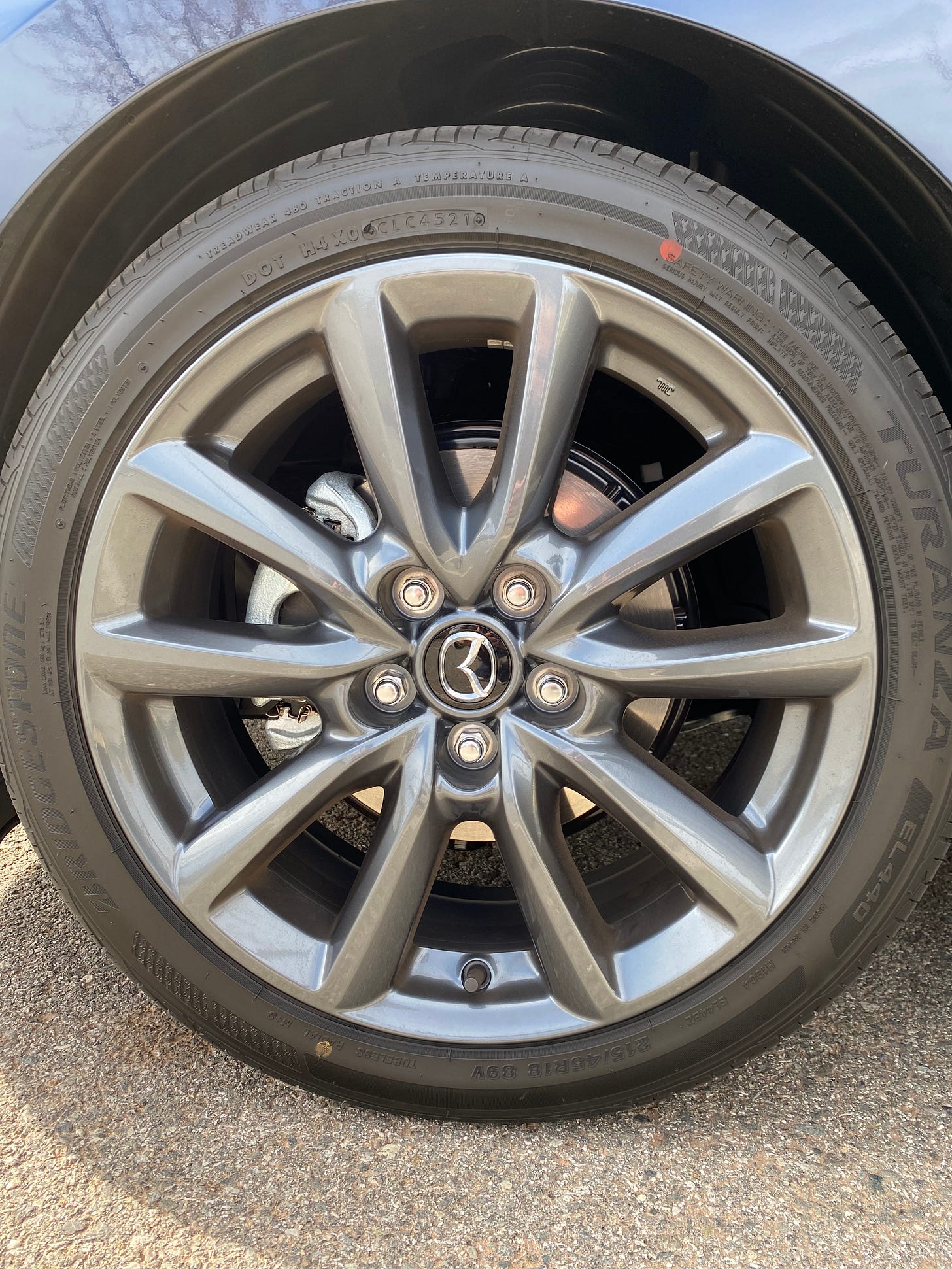
Competition
There’s plenty of competition for the Mazda3 hatchback, and the latest and greatest would be the Honda Civic hatchback I recently reviewed. The Civic hatchback Sport and Mazda3 Select are right at the same price point (approximately $25K). The reason I prefer the Mazda3 is that for the same price you get leatherette seats instead of cloth, an engine with more horsepower and torque (the Sport Civic engine makes 158 HP, 138 pound-feet torque), a larger media screen (8.8” instead of 7”), blind-spot monitoring and rear cross-traffic alert, and a higher quality sound system. That said, the Civic wins on MPG (30/38) and has a better lane-keep assist system than the Mazda. The base versions of the Civic hatchback and Mazda3 would be a close call, but I’d still opt for the Mazda on the quality of the media screen and sound system.
Some might also compare the Mazda3 to last year’s redesigned Hyundai Elantra. You may have seen my review on the Hyundai Sonata, where it’s clear that Hyundai is leveling up in a major way on recent models. That’s no different with their compact Elantra (which has long been known as a beater/budget car). The newest Elantra has a super edgy design (similar to the Sonata), starts cheaper than the Mazda3 at $20K, and has a less powerful 147 horsepower/132 pound-feet of torque resulting in better MPG (33/43). One thing to note is that every Mazda3 comes standard with a full safety suite (including radar cruise control with stop-and-go) while the Elantra requires you to upgrade to at least the second trim level to get it (so that cheaper price has a tradeoff).
Beyond the Elantra, you have a more direct competitor in the Toyota Corolla hatchback. That car also came out in 2019, starts at a lower price ($21K) with an engine that makes 169 horsepower and 151 pound-feet of torque. The Toyota Corolla hatchback gets 32/41 MPG, beating the Mazda3 and even the Civic despite being more powerful than the base Civic . My main issue with the Corolla is the design, which is more in line with the quirky design on old Mazdas and seems more geared toward younger drivers. The Corolla generally feels less luxurious than the Mazda (particularly the graphics of the media screen), but would definitely feel roomier inside based on its shape. Some reviewers complain that the Corolla’s CVT transmission feels laggy and “whiney” compared to driving the Mazda3.
Finally, the Subaru Impreza hatchback would also be a competitor for the Mazda3. This is the cheapest of the bunch in base form ($19K) and you even get standard AWD at that price. My problem with the Impreza is that it is aging (it was introduced in 2017) and could probably benefit from a full redesign. The base Impreza does give you standard CarPlay (with a 6.5” media screen) but not the full Eyesight safety suite (unlike the Civic and Mazda3, which give you nearly all safety features even in the base models). That said, the Impreza does give you some basic safety features. The Impreza engine is a 152 horsepower with 145 pound-feet of torque which gets you 28/36 MPG.
Standard Features
In my recent review of the Honda Civic hatchback, I mentioned that I didn’t think the Mazda3 could stack up in standard tech. Now that I’ve actually driven the Mazda3, I stand corrected. Base Mazda3 hatchbacks come with an extensive list of standard features, including an 8-speaker audio system with Mazda harmonic acoustics, radar cruise control with stop and go, lane departure warning, lane keep assist, driver attention alert, rearview camera, LED headlights, LED taillights, auto high beams, rain-sensing wipers, 16” wheels, advanced keyless entry, wired CarPlay and Android Auto, an 8.8” media screen, a 7” partial digital dash, and a 3-year trial to the Mazda Connected app which shows you vehicle stats, has remote engine start, lock, unlock, etc. Similar to the base and Sport trim Civic, the base Mazda3 has cloth seats.
In general, the Mazda3 has a luxurious feel that utilizes high-end materials, including a partial leather dashboard (standard in all models), nice metals on the doors and steering wheel buttons, and a matte finish on the media controls near the gear selector (which is supposed to be basic compared to piano black gloss on higher trims, but is actually better because it doesn’t get all scratched up!)
Trims and Options
The Mazda3 comes in four different trim levels (while the Turbo models add two more variations). Beyond the base features outlined above, the next trim up (and the car I actually reviewed) was the Select, which adds 18” premium wheels, dual-zone climate control, leatherette seating surfaces, leather-wrapped steering wheel and gear selector, blind-spot monitoring, and rear cross-traffic alert. For $25K, I feel like that’s an excellent bundle of options and probably worth the upgrade over the base model.
Beyond Select, you have the Preferred trim (mid $26’s), which allows you to add AWD, has a moonroof, power driver’s seat with memory, and heated front seats. The Premium trim, which puts you above $29K, adds real leather seats, Bose premium audio with 12 speakers, and an adaptive front lighting system. Real leather seats don’t make a huge difference to me and the base sound system on the Mazda is so good that although the Bose is probably amazing, it might not be worth the money. I’d personally keep it in the middle trims to get the best value.
For those wondering, both Turbo models are above $30K and slightly switch up the feature breakdowns. Turbos come with larger tailpipes, a couple more safety features (such as traffic jam assist), parking sensors, and sportier body moldings. If speed and power are important to you, the turbo models might be worth considering. But value-wise, I think you want to stay under $30K for this car to make sense. Otherwise, you might need to cross-shop more luxury options to see if the turbo is really the best for the money.
Driving Impressions and Safety Suite
I recall that when I was driving the Civic hatchback, there were moments when the base engine felt underpowered. Of course, you can upgrade the engine in the Civic but for the same price as the Sport Civic trim, the Mazda3 gives you a better engine. The horsepower in the Mazda3 engine rectified that “underpowered” feeling in the Civic. Granted, it’s not the most thrilling thing I’ve driven, but we’re talking budget cars here. You want to balance efficiency with power and a little bit of fun. As I said before, the Mazda3 can stand to be more efficient, but the low-end torque even on the base engine makes it feel pretty dynamic and fun. That low-end torque doesn’t quite do the trick once you get into higher speeds, where the car needs a little more time to get you where you need to be.
The car does have a sport mode (like most) which livens things up. The Mazda3 also has a good steering feel and is responsive overall. It would be plenty of fun for most people on a winding mountain road (probably more fun - and safe - if you get the AWD). The car also benefits from the automatic transmission so you don’t get the whining experience, something I closely associate with driving a Toyota. Only those really seeking a driving thrill should feel the need to look into the Mazda3 turbo models…because it does kind of kill the value proposition by lowering the MPG and raising the price of the car.
Probably worth noting is that the suspension can feel a little rough on this car. You will feel potholes and you will hear road noise…that’s something you should generally expect from any car at this price point. It’s probably amplified by the 18” wheels you get on the higher trim models, but the visual appeal of the wheels is worth the sacrifice to me.
The standard safety suite is pretty impressive, particularly the standard radar cruise control with stop-and-go, which does great in traffic. In some cars, the radar cruise control only works above certain speeds so it’s nice that Mazda includes a stop-and-go system. The blind-spot monitor is also nice and provides audio alerts and visuals on your side mirrors and in the digital dash, so there’s absolutely no excuse to crash into anything. The only area really lacking is the lane keep assist. It will certainly warn you and pull you back into the lane, but only once you’ve really gone over the lane marker. This is unlike the latest systems from Honda and Hyundai which you can turn on and almost not touch the wheel because it fully keeps you within the lane without going over (unless it’s a dramatic or unexpected curve).
Infotainment and Sound System
Probably one of the most impressive aspects of this car is the media screen and sound system. The standard 8.8” screen is exactly the setup I had in my upgraded (albeit older) BMW 3-series. The quality of the screen is on par if not better than what I had in that BMW. This screen is definitely better than what I saw in the Lexus UX I reviewed last year (which says a lot considering this car costs $13K or so less). There is nothing special about the Mazda native media system, so most people will want to plug into Apple Carplay or Android Auto for the best experience. Overall, I was thoroughly impressed by the media setup. The media system also works via a knob close to the shifter (it’s not a touch screen), which I prefer because it keeps fingerprints off of the beautiful screen. That knob also has fixed buttons that integrate with Carplay so if you press the navigation button, you’ll be taken to Carplay navigation, if you press media, you’ll be taken to Carplay media, etc. It’s a small detail that every car doesn’t get right. Things like Siri are also fully integrated, so you can ask the car to do anything Siri can.
The base sound system on the Mazda is exceptional. The “harmonic acoustics” makes the 8-speaker system feel like you paid for an upgrade. The Mazda also benefits from the placement of speakers (with the door speakers higher up than in most cars). This compares to the 4-speaker system in the base Civic and the 6-speaker system in the Sport Civic, which were average but nothing mind-blowing. The quality of the Mazda’s sound system makes me question doing any audio upgrade in this car at all - it’s seriously good stuff.
Maintenance and Warranty
Mazda’s are up there with what I would consider some of the most reliable and lowest cost maintenance vehicles around. They will last a long time and shouldn’t cost you a ton to get there. Because of that reliability, Mazda warranties are actually shorter than some competitors. New Mazda3’s come with a 3 year/36,000-mile warranty. Another note is that unless your dealer offers one or you pay extra, Mazda’s do not come with free maintenance. This is unlike Toyota and Hyundai who do offer the first few maintenance visits free for new models. While it won’t cost much to do these early maintenances (I’d expect no more than a few hundred total to get you to about 30K miles), it would be a nice touch. CPO models come with a 12 month/12k mile warranty.
Three Reasons For and Against the Mazda3
Wrapping up with three reasons for/against the Mazda3. Three reasons to buy: (1) impressive standard safety suite; (2) luxury feel for a budget price; (3) extremely impressive media screen and base audio system. Three reasons against the Mazda3: (1) MPG could stand to be better; (2) lane keep assist not as good as the latest competition; (3) despite looking good, it’s not the freshest model on the road.



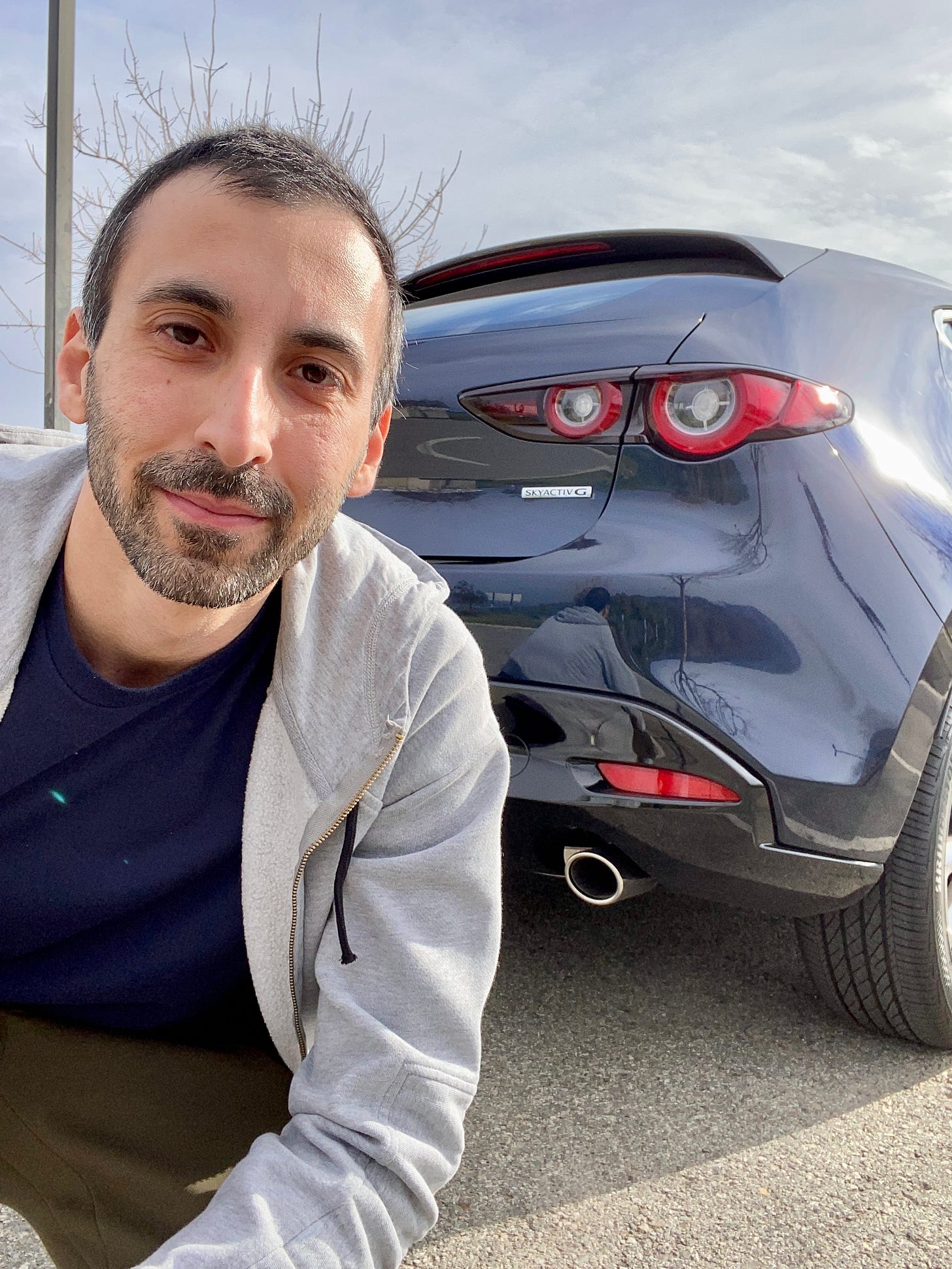
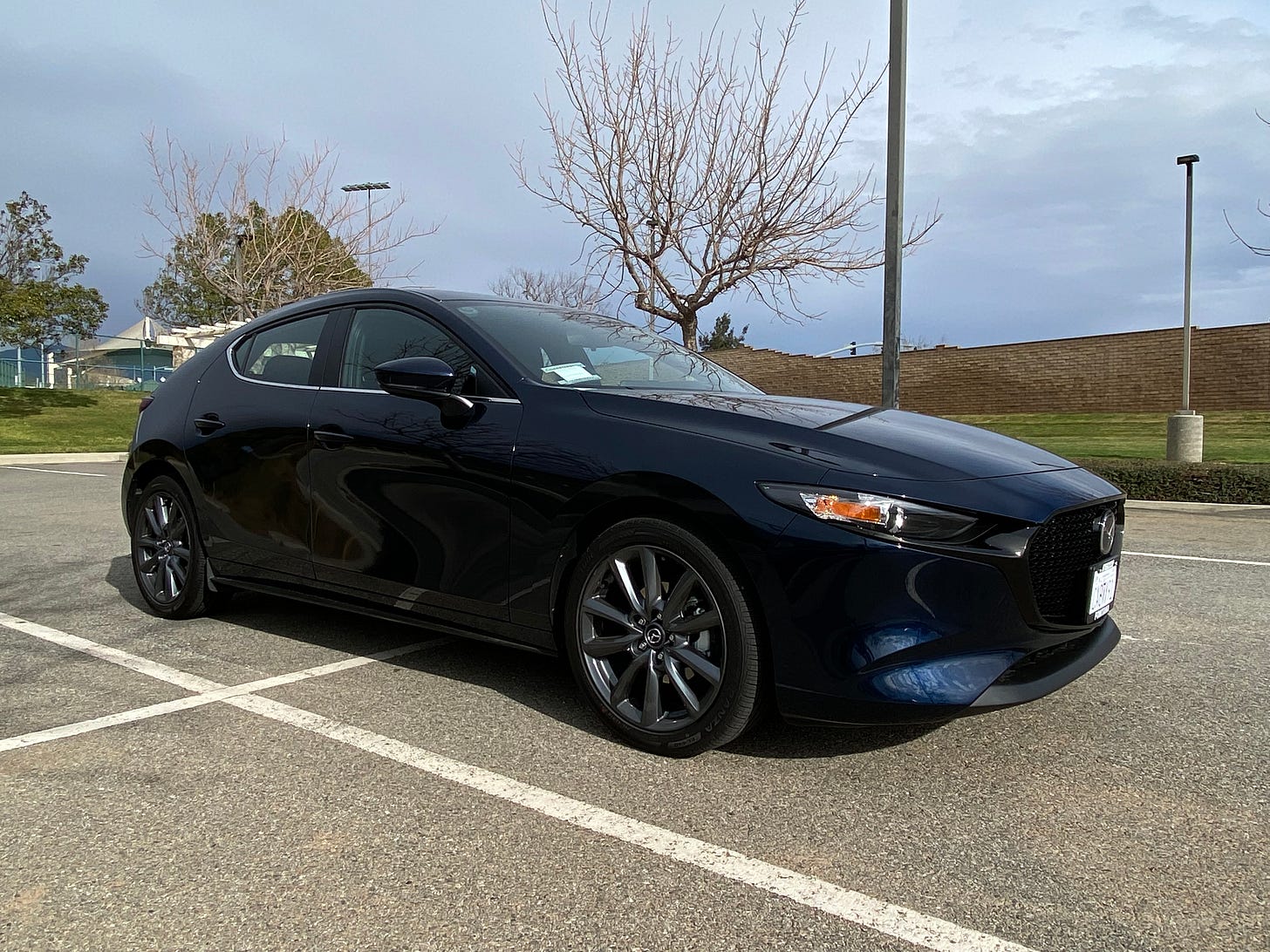
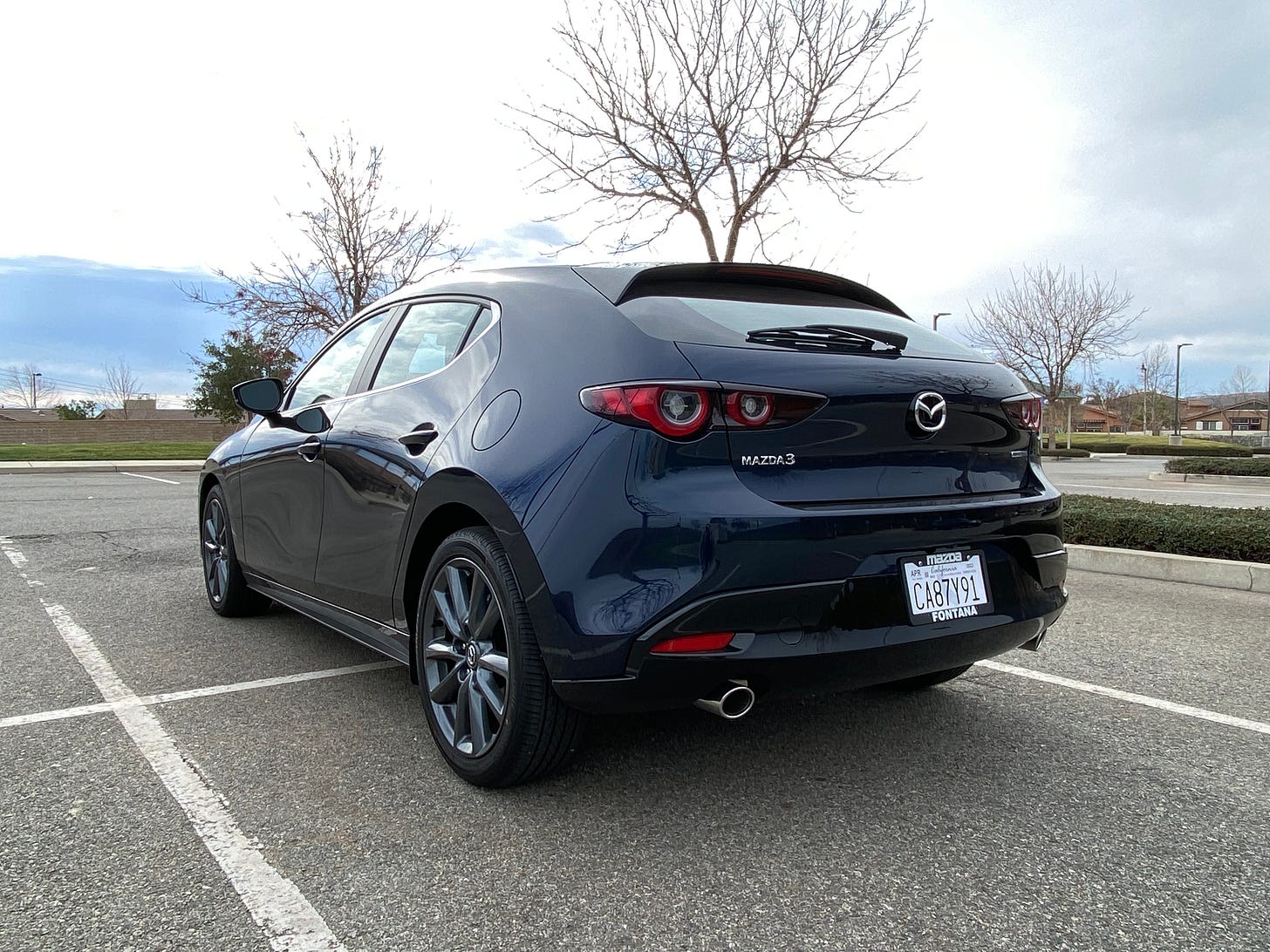
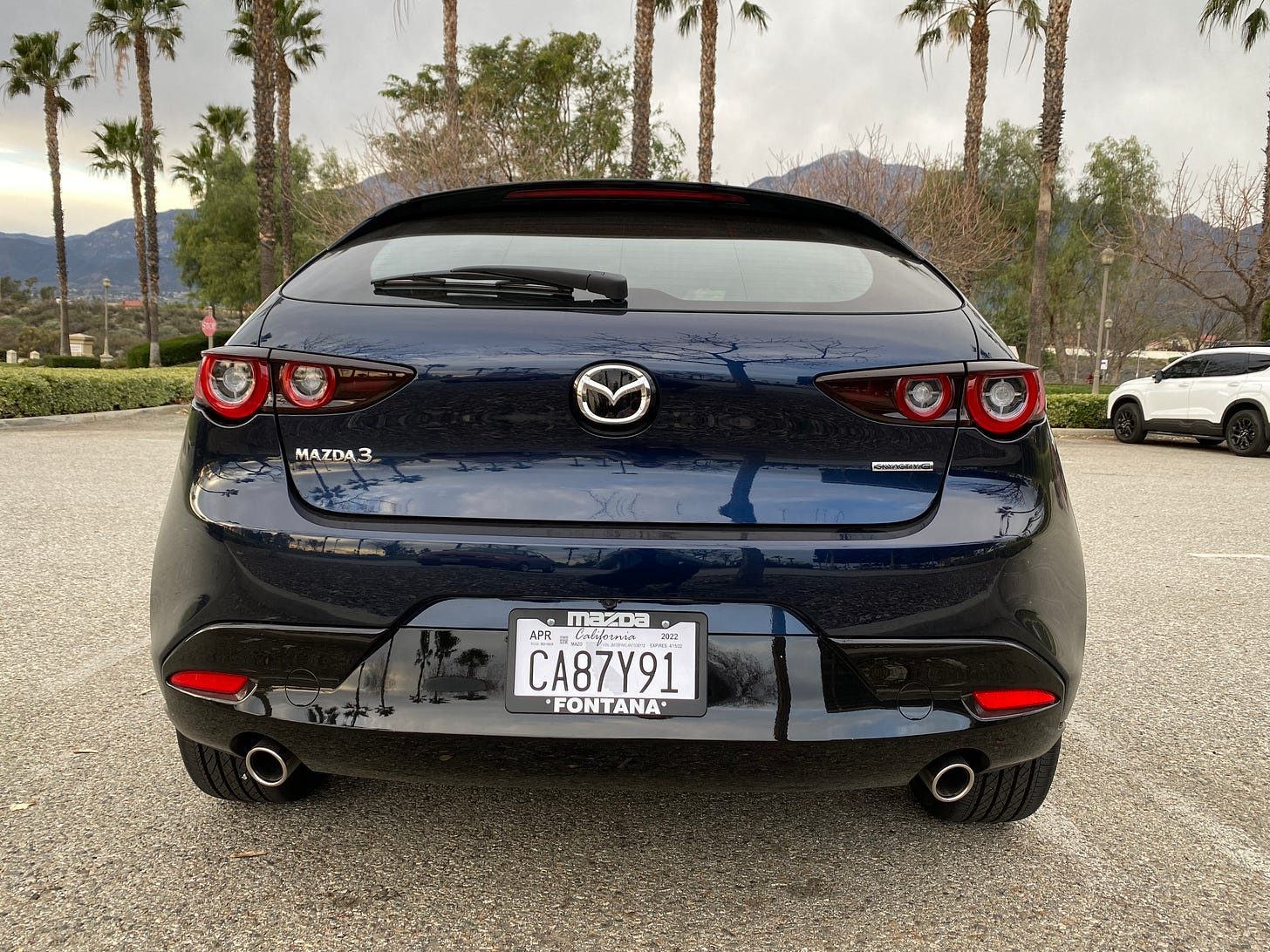
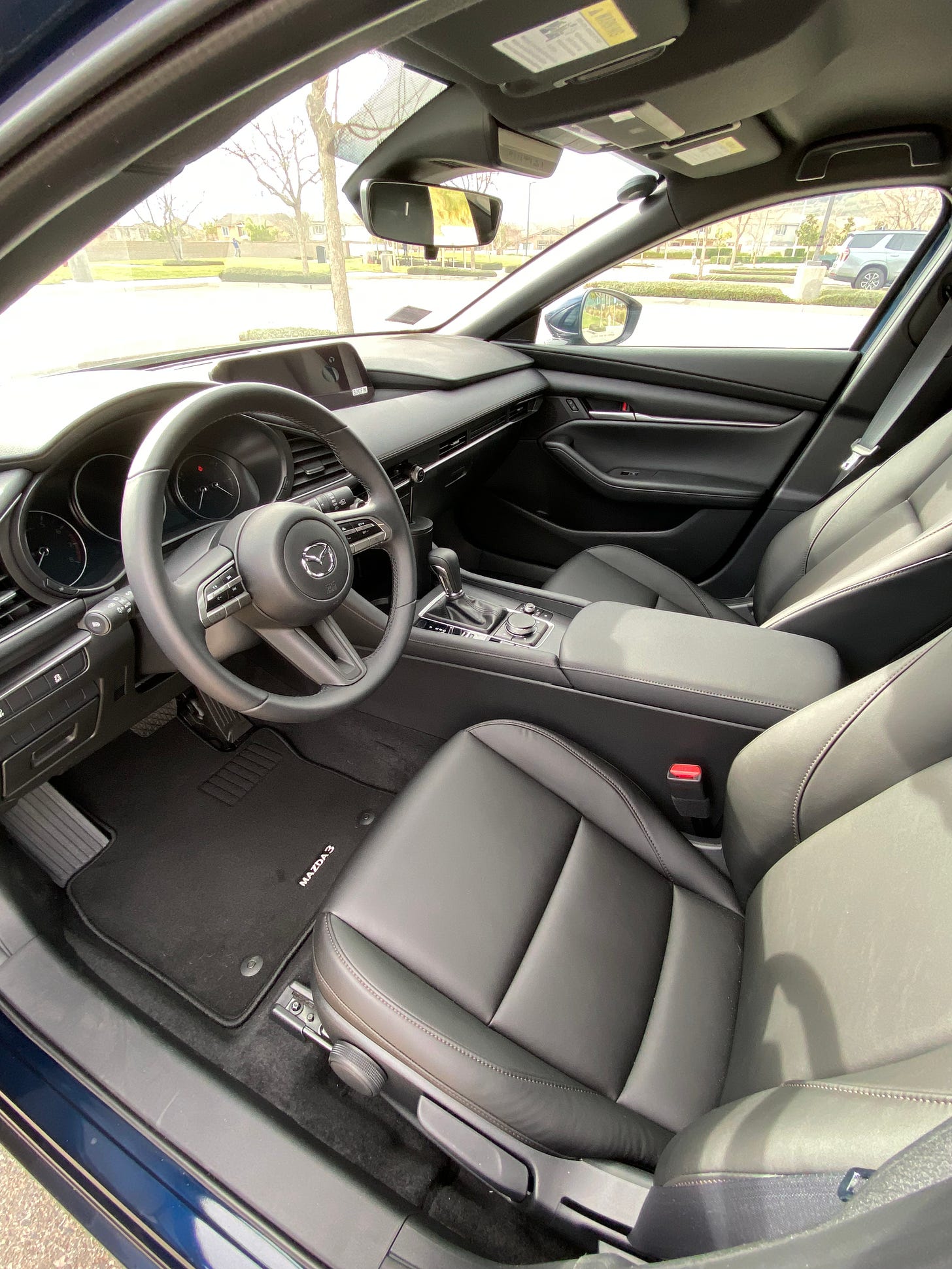
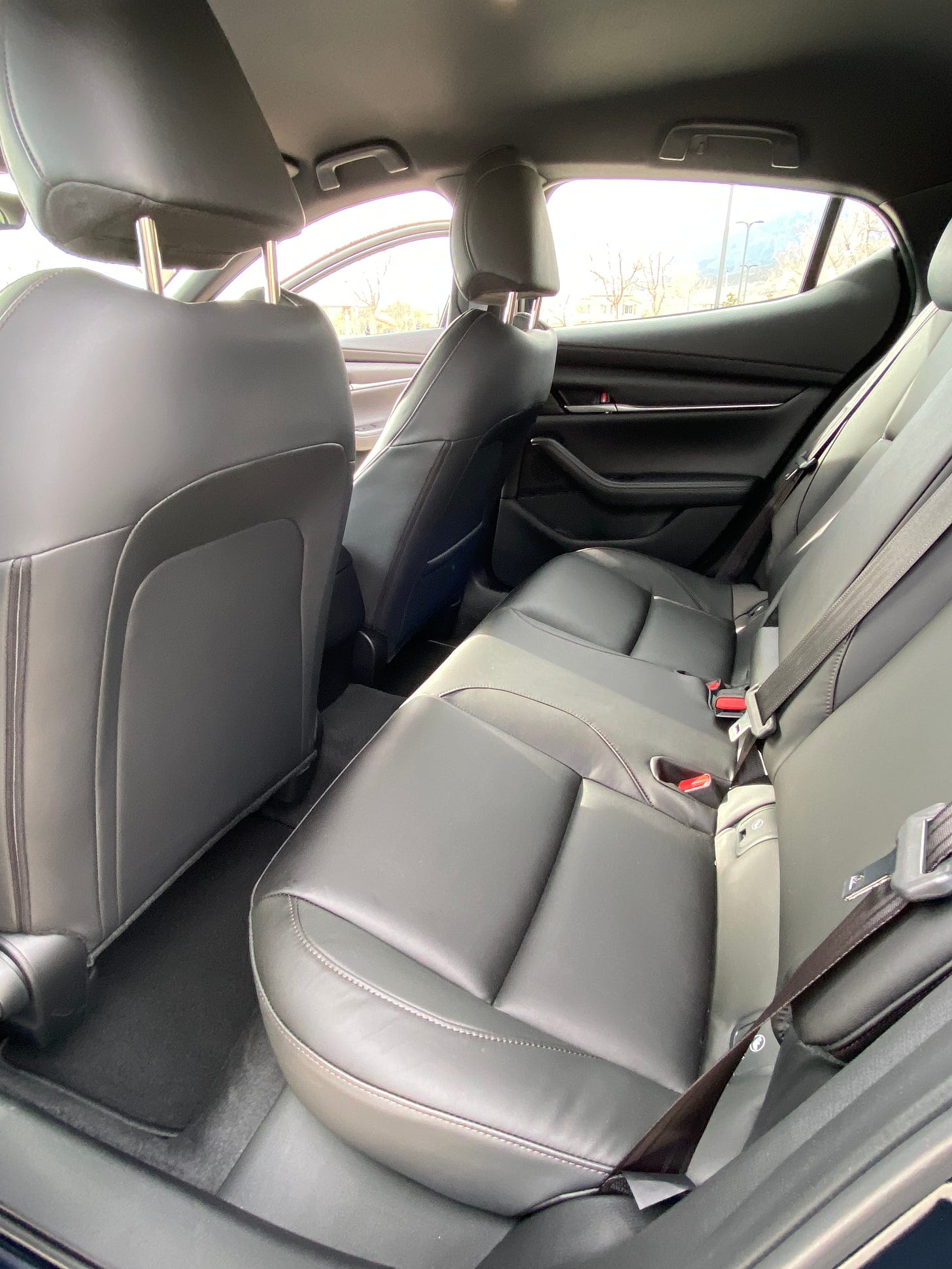
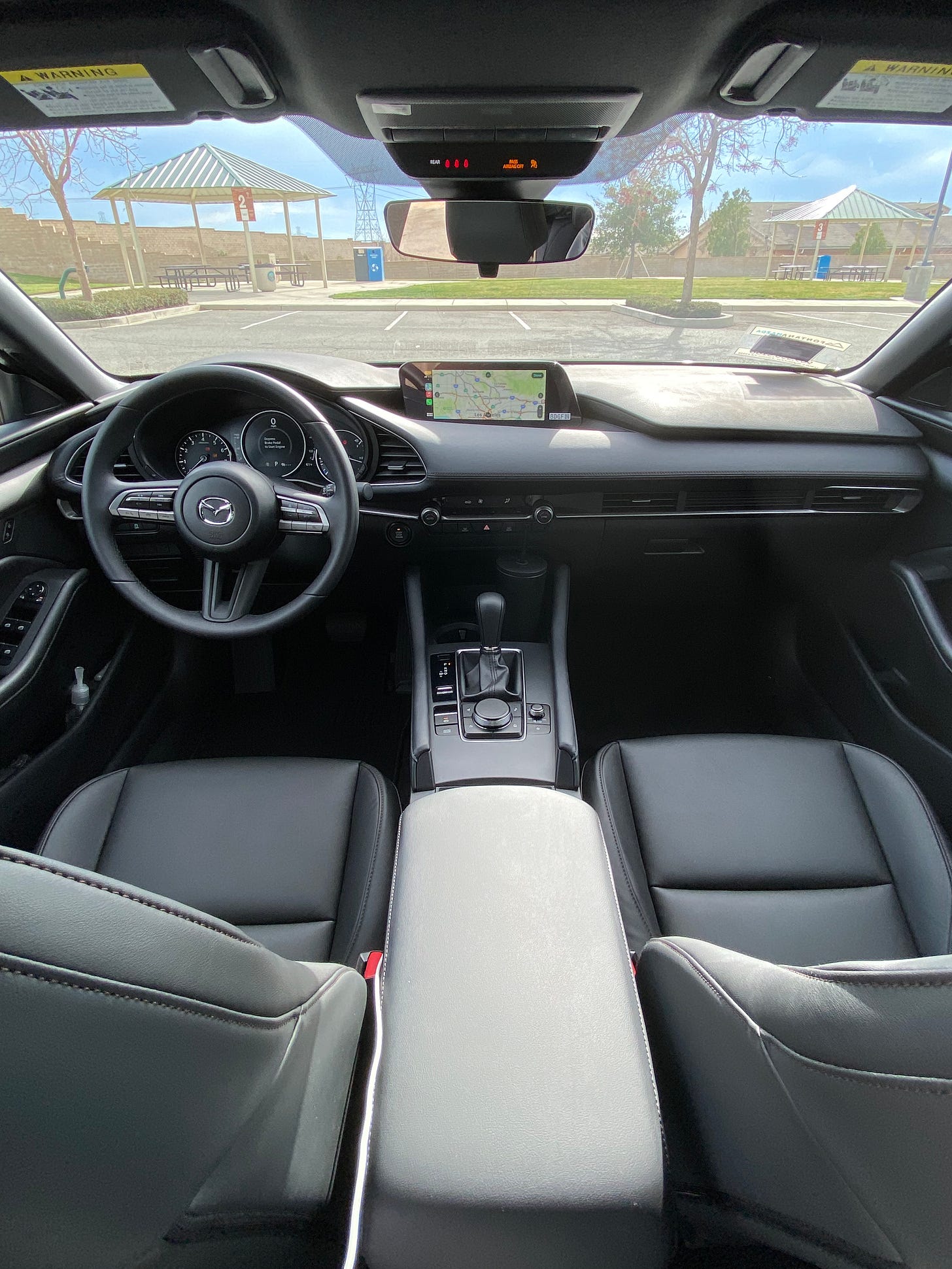
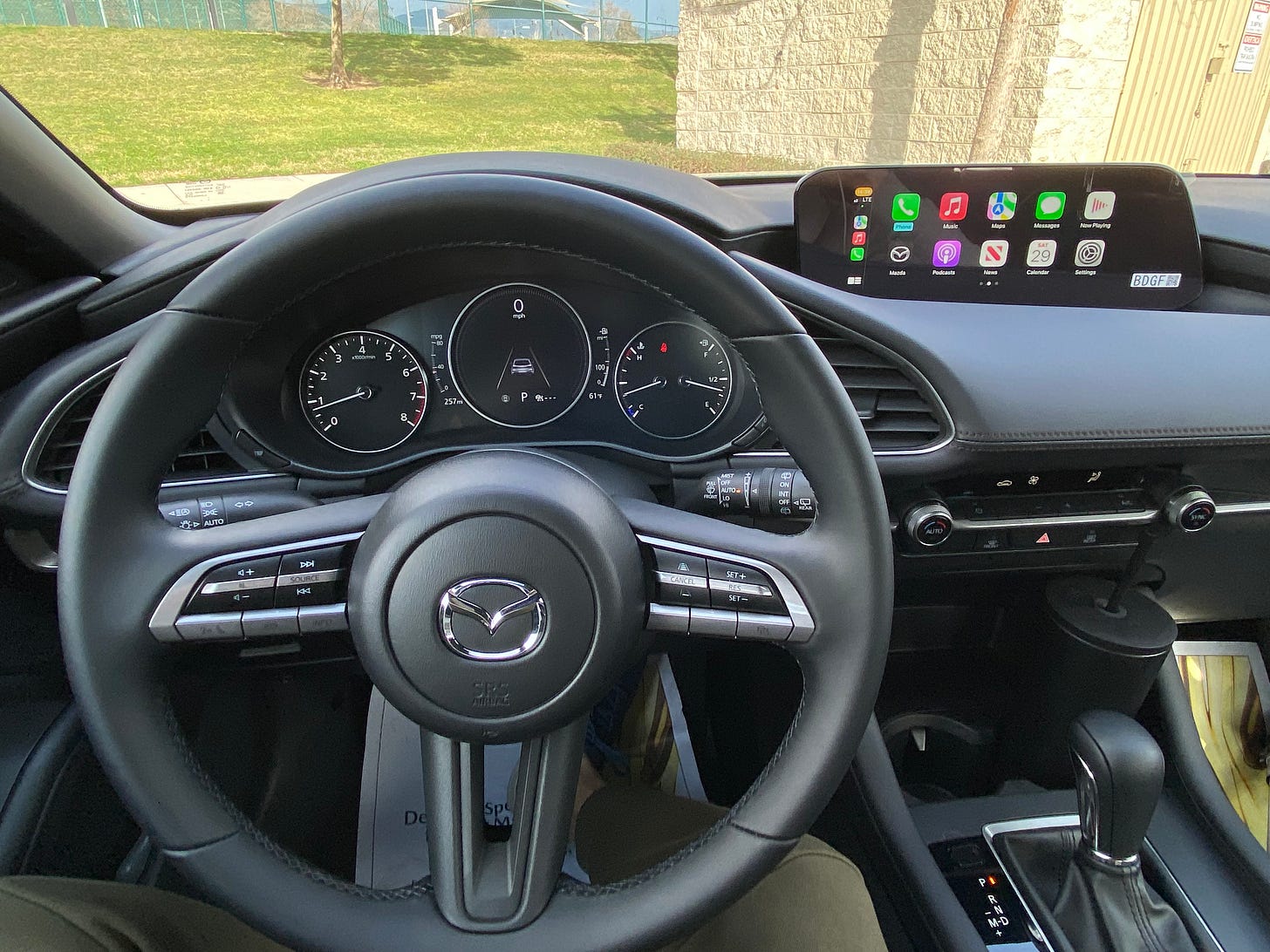
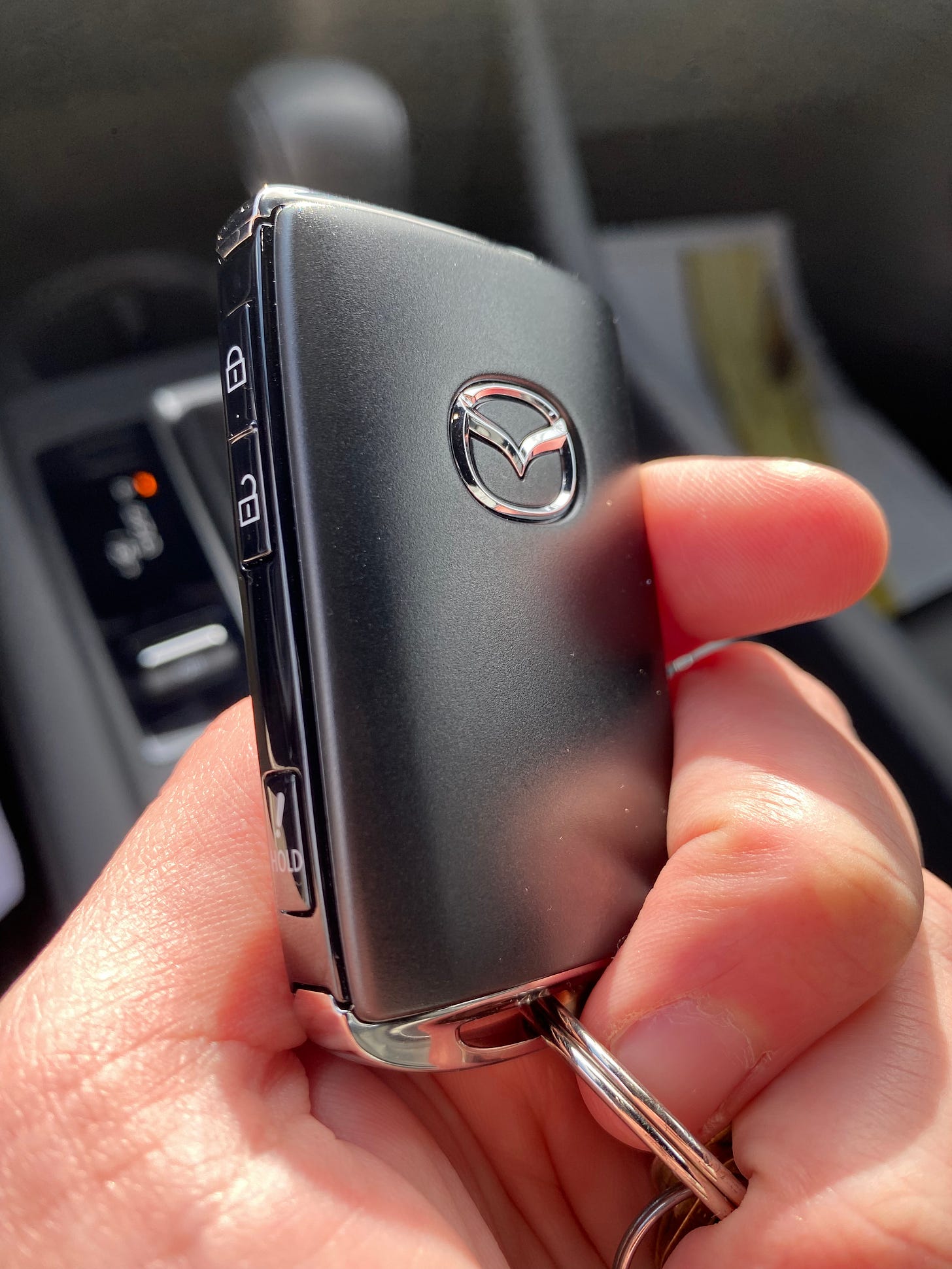
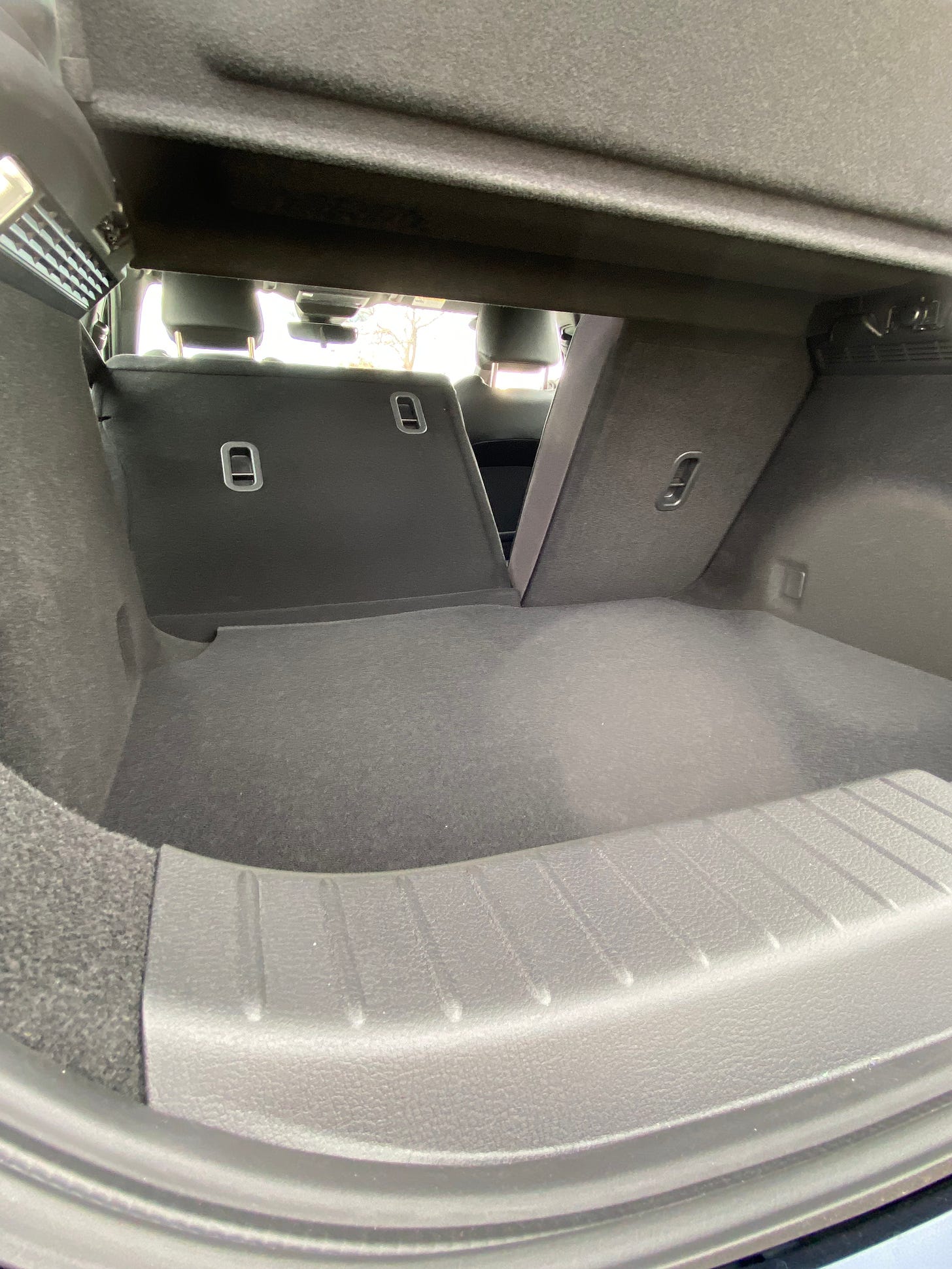
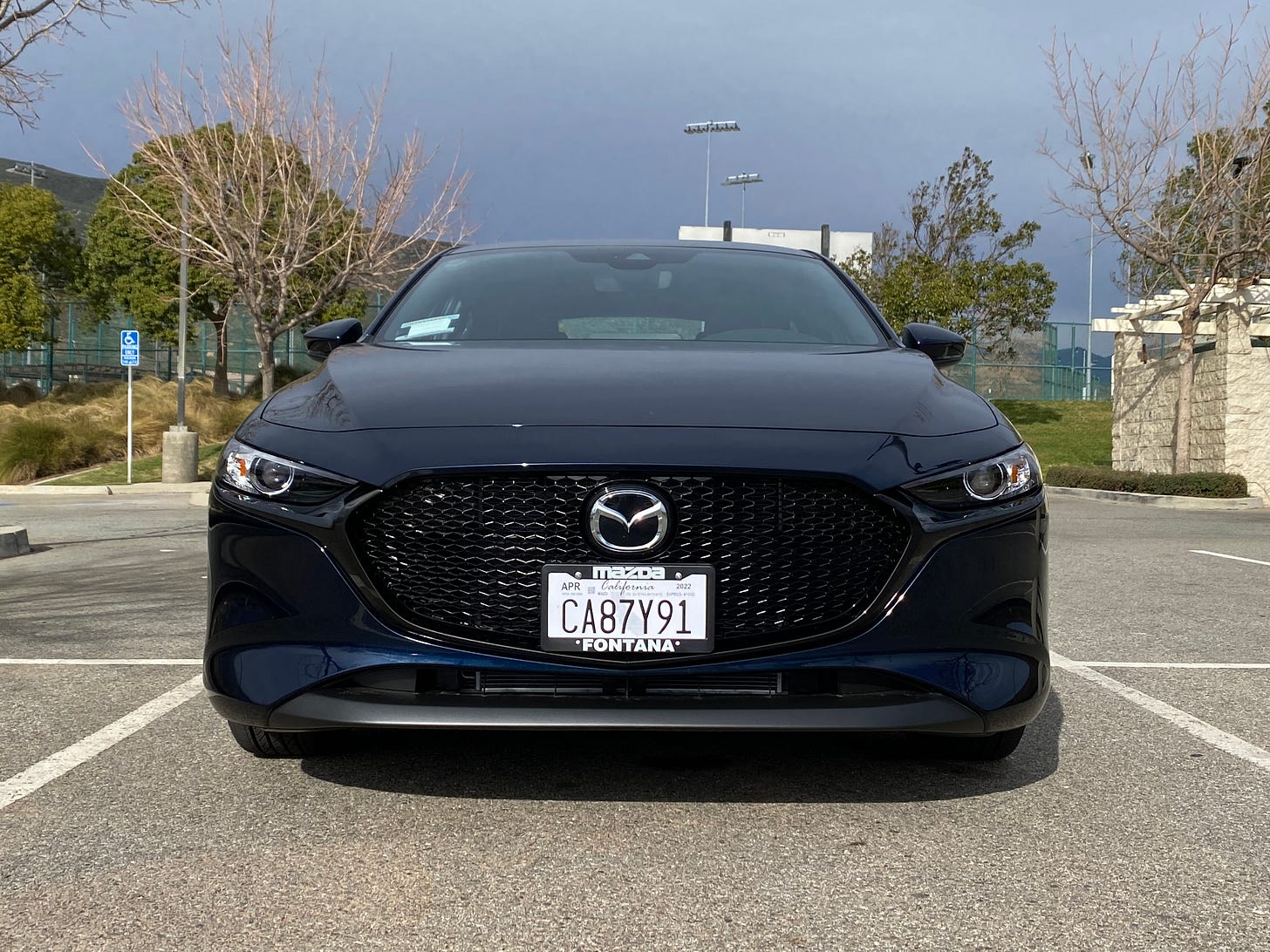
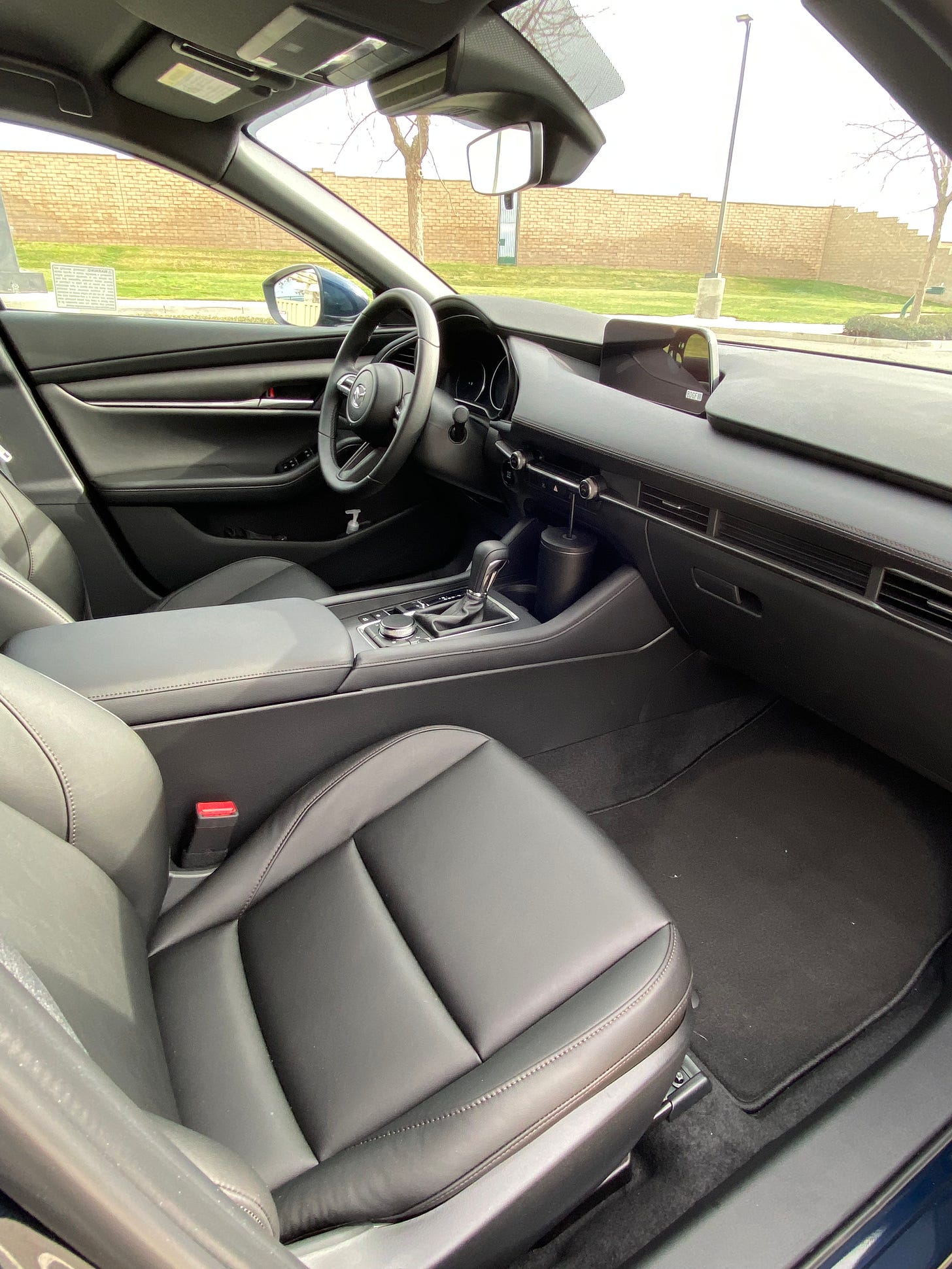

I'm looking into either a 3 hatchback or a CX-30. I'm leaning the CX-30 simply because my driveway is pretty rough. Is the ground clearance significantly different between the two? Because I reallllllly want the 3 hatchback more.